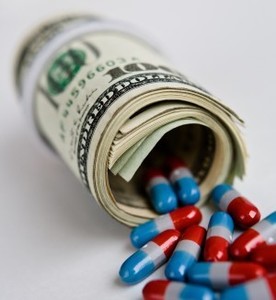Pharmaceutical expenditure is a major indicator in health-expenditure accounting, and is particularly useful to policymakers and researchers in making regional, country and international comparisons, forecasting, and assessing the effect of pharmaceutical policies [1].
Established repositories of pharmaceutical expenditure include the OECD and the Eurostat Health databases, which have sound methodologies and clear guidelines for transfer of data by Member States. The recent launch of the Joint OECD-Eurostat-WHO Health Accounts Data Collection is a recent step forward in reducing the national burden of data collection and establishing international standards and definitions.
Recent pharmaceutical expenditure data from national health accounts, reported by the World Medicines Situation Report, 2011, confirmed large differences in pharmaceutical expenditure among regions of the world:
- Between 2005 and 2006, pharmaceutical expenditure per capita ranged from US$7.61 in low-income countries to US$431.6 in high-income countries, with considerable variation between income groups in each country.
- During this time, an average of 24.9% of total pharmaceutical expenditure was spent on medicines ranging from 7.7% to 67.6%.
According to OECD data:
- Between 2000 and 2009, pharmaceutical expenditure rose by more than 50% in real terms in OECD countries, despite negative growth rates in several countries.
- In 2010, pharmaceutical expenditure accounted for almost one-fifth (19%) of all health expenditure in European Union Member States, making it the third biggest spending component after hospital and ambulatory care.
In a series of four articles, Vogler and co-authors examine the various components of pharmaceutical expenditure, explore which pharmaceutical policies can influence price and volume within a European context, discuss limitations of the indicator, and explain how to interpret pharmaceutical data.
Conflict of interest
The authors of this paper [1] declared that there were no conflicts of interest.
Editor’s comment
Dr Sabine Vogler, Member of International Editorial Advisory Board of GaBI Journal, published the full manuscript in GaBI Journal, 2013, Issue 4, readers are invited to view the paper:
Understanding the components of pharmaceutical expenditure—overview of pharmaceutical policies influencing expenditure across European countries
If you are interested in contributing a research paper in generics policies of your country to GaBI Journal, please send us your submission here.
Related articles
Understanding pharmaceutical expenditure
Volume components of pharmaceutical expenditure
Price components of pharmaceutical expenditure
Reference
1. Vogler S, et al. Understanding the components of pharmaceutical expenditure—overview of pharmaceutical policies influencing expenditure across European countries. Generics and Biosimilars Initiative Journal (GaBI Journal). 2013;2(4). doi: 10.5639/gabij.2013.0204.051
Permission granted to reproduce for personal and non-commercial use only. All other reproduction, copy or reprinting of all or part of any ‘Content’ found on this website is strictly prohibited without the prior consent of the publisher. Contact the publisher to obtain permission before redistributing.
Copyright – Unless otherwise stated all contents of this website are © 2013 Pro Pharma Communications International. All Rights Reserved.








 0
0











Post your comment